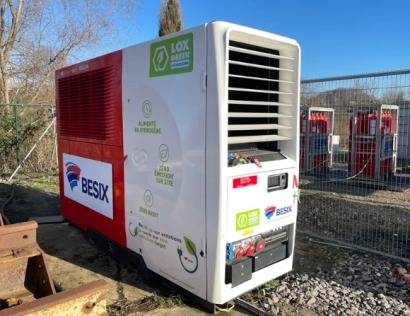
For this the hydrogen unit was connected to the largest tower crane on the site. "This tower crane has a peak consumption of up 70 KW, which it needs immediately, making it pretty representative of the consumption of a crane on an average construction site" explains François Campus, Senior Plant Manager at BESIX. "The results of these four weeks of tests will help the Equipment Department, and more generally our BESIX worksites, to make the right choices during our energy transition", he adds.
This test is part of the strategy of decarbonising the BESIX group's activities, aimed at offering construction and project site customers increasingly reduced carbon footprints. "This first test, which required us to train a dozen people, will serve as a basis for our ongoing search for solutions to reduce our on-site CO2emissions", François Campus adds.
This initiative by BESIX Environment allows the BESIX group to continue its trajectory in the green hydrogen market, making it an effective player in developing this new energy vehicle from production to use.
Various parameters were assessed during these four weeks, among them generator supplier reliability, facility security, employee training, transport sustainability, and security of green hydrogen supply.
Green hydrogen: how does it work?
Green hydrogen is a gas produced mainly by the electrolysis of water using renewable energy sources, like wind and solar energy, therefore non-polluting.
The hydrogen, stored in pressurized cylinders, is then used to operate a fuel cell which converts the hydrogen (and air) into electricity (and water) which powers an electric motor coupled to a battery. The crane takes its power directly from the fuel cell or battery (which recharges when the crane is not in use). The process makes it possible to lift loads silently and without emitting CO2 or polluting particles.

